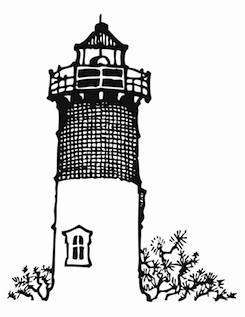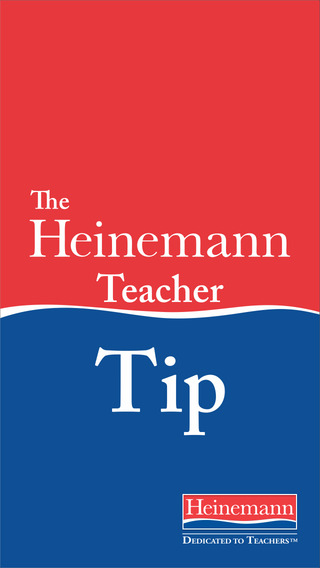| |
Beyond the Written Word
Close Readings of Complex Visual Texts
By Carol Jago–HMH Program Author, English Language Arts
Blog post originally published on hmhco.com

Visual artists approach their work with the same purposes as writers: to persuade, to explain, and to convey experience real or imagined. The difference is in their tools. While writers employ diction, syntax, and imagery to establish a tone and convey their message; visual artists use color, line, shape, object, and scale.
Our students are bombarded by visual images yet rarely stop to analyze them. I’m not talking only of advertising. Media study units are popular components in many English syllabi. What isn’t much in evidence in the secondary English curriculum are rhetorical readings of complex visual texts. While these images have been ostensibly created to inform, they also often contain powerfully persuasive messages.
Images: The Symbolic Pelican
An example of one such text is the photograph of the oil-coated pelican that appeared in newspapers and websites all over the world following the 2010 explosion on British Petroleum Macondo Prospect. The bird became a symbol of the tragedy and made the fallout from the spill real in ways that statistics about number of barrels of oil dumped into the Gulf could not.
In the same way we challenge students to deconstruct and analyze an editorial, we need to invite them to “read” visual images. Have students look closely at the photo for two minutes. It will seem an eternity, but insist on the full interval. Tell students that if they think they’ve seen everything in the photo, they should scrutinize another corner. Then have students turn to a partner and talk about what they see. After about three minutes, bring the class together to discuss as a whole group the following or similar text-dependent questions:
- What effect does the pelican’s open beak have on your reaction to the photo? What does the bird seem to be saying?
- How does the position of the pelican’s wings affect your “reading” of the bird’s dilemma? What does this gesture suggest?
- How does the viewer’s personification of the pelican contribute to the photograph’s impact?
The editors who chose to display this image to accompany news stories about the spill were making a conscious and calculated decision to appeal to their readers’ emotions in order to incite outrage against those responsible for the spill. So effective was this image and others like it in portraying suffering wildlife, British Petroleum has had to pay—along with their fines—for widely distributed public relations videos demonstrating BP’s “Commitment to the Gulf.”
Videos: Telling a Different Story
You might want to have students view and do a rhetorical reading of the British Petroleum video. First show the one-minute video with sound, then without the background music. For their second reading, ask students to consider as they watch and then discuss:
- What effect does the backdrop of glistening, clean water have on a viewer? What are you meant to think?
- Describe the narrator of this video. Why do you think creators of the video chose this man and dressed him in this fashion?
- How do you interpret the images of wind surfing and shrimp skewers? What are these images included in the video? What are they meant to convey?
- Why do you think the video includes printed words? What impact do these statements achieve?
- Show the video one more time with the music and ask students to describe the effect the music had on the video’s message. How might different music have had a different effect?
We need to offer students more opportunities for this kind of analytical discussion not only because video texts are likely to be included on standards-aligned performance assessments, but more importantly because such videos are increasingly a part of students’ online reading lives.
You might be thinking, “Yes, but classroom time is so valuable and kids already know how to watch YouTube.”
True. Students are adept at watching cat videos. Unfortunately they tend to be naïve and inept at reading a visual text for purpose, method, and structure. But we can work on changing that—engaging in visual analysis gives us important tools for interpreting the world.
HMH® program author and celebrated literacy expert Carol Jago will receive the Thought Leader in Adolescent Literacy Award at this year’s International Literacy Association conference July 17–20 in St. Louis.
Carol has taught middle and high school for 32 years and is associate director of the California Reading and Literature Project at UCLA. She is past president of the National Council of Teachers of English and author of With Rigor for All: Meeting Common Core Standards for Reading Literature and Papers, Papers, Papers: Handling the Paper Load (Heinemann).
Charter School of the Month
Cape Cod Lighthouse Charter School
Harwich, Massachusetts

Chartered 20 years ago as one of the first charter schools in Massachusetts, Cape Cod Lighthouse Charter School spent its first 17 years in rented space in a strip mall before purchasing and renovating an old movie theater three years ago. While the school adheres to a rigorous academic standard that prepares students to meet state standards, its main mission extends beyond this, attempting to unleash potential in all of its students and teach them the skills needed to reach their individual goals.
CCLCS was founded on the idea that middle school students possess often undervalued creativity and intellectual potential, and as such the school strives to provide a safe, supportive environment where students can take risks and grow. Teachers bring out students’ strengths and traits through various interactive learning experiences that combine theoretical and practical aspects. Their students conduct research in the field, participate in archaeological digs, publish articles in national journals, and exhibit in local galleries and art exhibitions. Seminars, or elective courses, are offered each year in a wide array of subjects from Italian Language and Culture to Forensic Science, allowing students to cultivate and pursue new interests beyond the traditional subjects taught. CCLCS students realize that learning is conducted beyond the four walls of their classrooms and develop a lifelong passion for learning.
Is your school a leader? Do you have a great success story you’d like to share? Tell us about it and you could see your school featured in a future edition!
Product Spotlight

Bridge to your core curriculum with HMH Leveled Readers.
As an educator facing the heightened expectations for student achievement, leveled reading instruction is a critical tool to bridge to new state standards. HMH Leveled Readers and Bookrooms, loved by generations of educators and students, now feature many new titles across several series, including Rigby® PM Books, Sails & MainSails, BOLDPRINT®, and Pair-It™ Extreme. Every new title includes updated, enhanced instruction to save you time and maximize student success.
Several series are also available digitally, via My eBookroom. And our Custom Bookrooms and Classroom Libraries allow you to build a collection that directly meets your needs and fits your budget.
Learn more about HMH Leveled Readers.
Monthly Poll
Last month’s poll results: What are you most excited about for the future in education?
| Collaborating to develop instruction |
27%
|
| Opportunities for real-world application |
41%
|
| Standards requiring more critical thinking |
18%
|
| Increased access to the latest technology |
14%
|
This month's question: What are your education goals this year?
See how you compare next month when we reveal the poll results! |
|
Professional Development Corner
From The Teacher Tip, A Free App from Heinemann.
Meet Students' Needs Through Universal Design for Learning
Adapted from Possibility to Success by Patrick Schwarz.
 Universal learning design considers all students individuals and offers multiple, multifaceted ways of making learning work for everyone.
Consider its 3 major components:
- Multiple means of representation. Consider different ways of presenting content to students. Examples that help meet the needs of all learners include offering audio and visual options at all times, providing guided notes and graphic organizers during a lecture or review, and offering books at different reading levels.
- Multiple means of engagement. Allow student to choose how they will complete their assignments, applications, and responsibilities. Examples include working independently, with a partner, or in small groups; working at a desk, at a table, or on the floor; and using technology inside or outside the classroom. Some students need to write to understand, others need to talk through ideas, and still others may need to represent what they are learning physically or graphically.
- Multiple means of expression. Students express and demonstrate what they have learned differently. Traditional paper-and-pencil tests are very limiting for many students; others do fine on them. Other assessment options include projects, tiered assignments, multimedia demonstrations, models, films, portfolios, and oral exams.
Schwarz, Patrick. 2013. from Possibility To Success: Achieving Positive Student Outcomes in Inclusive Classrooms.
Tip from August 18, 2015.
|
Financial Resources to Help Your School Excel
Featured Grant–Advanced Technological Education from National Science Foundation

The Advanced Technological Education (ATE) program focuses on the education of technicians for the high-technology fields that drive our nation's economy. The program involves partnerships between academic institutions and employers to promote improvement in the education of science and engineering technicians at the undergraduate and secondary school levels. The ATE program supports curriculum development; professional development of college faculty and secondary school teachers; career pathways to two-year colleges from secondary schools and from two-year colleges to four-year institutions; and other activities. Another goal is articulation between two-year and four-year programs for K–12 prospective teachers that focus on technological education. The program also invites proposals focusing on research to advance the knowledge base related to technician education.
Average Amount Awarded: $200,000–$500,000
Deadline to Apply: 10/8/2015
Apply online here.
Find more grants with our Free Grant Database.
|
Upcoming Events
Visit HMH at these upcoming local events:
10/6/15–HMH Education Leadership Summit, San Jose, CA
|
| |
|





